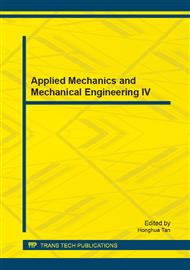p.222
p.228
p.232
p.239
p.245
p.251
p.256
p.262
p.267
Research on the Improving of the Large-Scale Wind Power Accommodation Ability in Inner Mongolia Grid
Abstract:
Large scale wind power integration into the Inner Mongolia grid has brought new problems to the wind power accommodation in the present time. Key factors of the accommodation were summarized from which impact on wind power integration, including system voltage, transient and frequency stability, power relay protection, short circuit of wind power plants, power dispatch, etc. Based on the analysis of the wind power developmental characteristics in Inner Mongolia, some measures are proposed to improve the wind power accommodation ability, including the applications of distributed energy system and energy storage system to make better friendliness of wind power integration, as well as the enforcement of grid-connected operation characteristics of wind turbine and wind power dispatch levels to strengthen the security of the wind power integration.
Info:
Periodical:
Pages:
245-250
Citation:
Online since:
October 2013
Authors:
Keywords:
Price:
Сopyright:
© 2014 Trans Tech Publications Ltd. All Rights Reserved
Share:
Citation:


